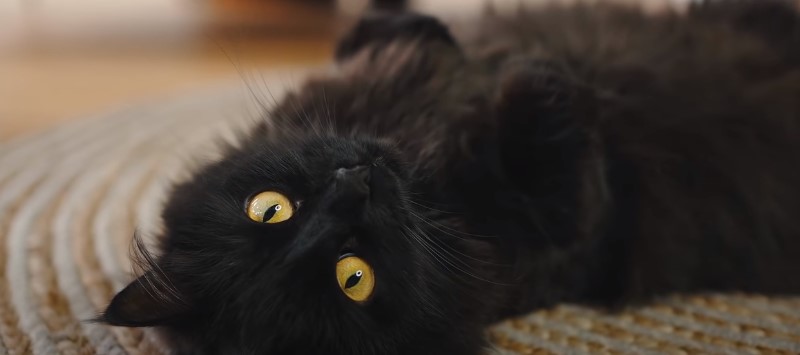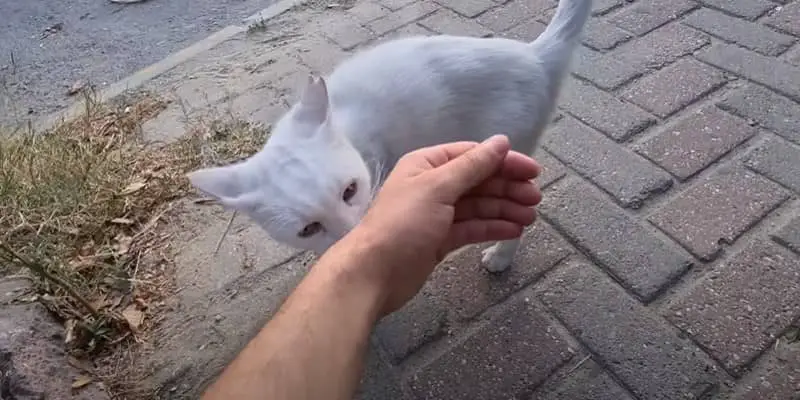Cats like to roll in dirt for many reasons. They may do it to mark their territory, clean themselves, cool down, attract mates, or relieve stress.
If you are concerned about your cat’s behavior, you can try to identify the reason and address the issue.
For example, you can provide your cat with other ways to mark its territory, keep its fur clean, or give it a cool place to relax.
Whatever the reason, it’s clear that cats have a unique relationship with dirt and love to spend time rolling around in it.
Why do cats roll in dirt?
Cats rolling in dirt, dust, or even mud is a behavior that has various potential reasons. While there isn’t an absolute consensus on the exact purpose, several theories exist to explain this behavior:
Scent masking: Cats have a highly developed sense of smell. Rolling in dirt or other substances can help mask their scent, making it easier for them to approach prey without being detected.
This behavior might be a remnant of their wild instincts as stealthy hunters.
Communication: Cats use scent as a form of communication. By rolling in dirt or other odorous materials, they might be picking up scents from their environment and then bringing those scents back to their social group or territory to share information.
Cleaning and grooming: Rolling in dirt could help cats clean themselves by removing excess oils and debris from their fur.
This behavior might be especially beneficial for cats that might not have access to water for bathing.
Parasite control: Some researchers believe that rolling in dirt or dust might help cats dislodge external parasites like fleas and ticks.

The abrasive action of the dirt could potentially help remove these pests from the cat’s fur.
Stimulation and play: Cats are known for their playful behavior, and rolling in the dirt might simply be a form of entertainment for them.
The sensation of the dirt on their fur and the movement involved in rolling could be enjoyable for some cats.
Territorial behavior: Cats have scent glands on various parts of their bodies, including their cheeks, chin, and paws. Rolling in the dirt might help them deposit their scent onto the ground, marking their territory and signaling to other cats in the area.
Skin health: The texture of the dirt and the act of rolling could provide a form of skin stimulation that helps cats maintain healthy skin and fur. It might also help alleviate itching or discomfort.
Cooling down: Rolling in dirt could help cats cool down on a hot day. The dirt might provide some relief from the heat by absorbing excess moisture and providing a cooling sensation.
Is it bad for cats to roll in dirt?
Cats rolling in dirt is a natural behavior that serves various purposes. While it might seem unsanitary, it’s generally not harmful. Cats roll to mark their scent on objects, which is a way of claiming territory or communicating with other cats.
Additionally, rolling in dirt can help remove excess oil and debris from their fur, acting like a natural grooming technique. However, there are some potential risks.
Cats might pick up parasites or irritants from dirty areas, and rolling in certain substances could lead to skin issues or allergic reactions.
To balance this behavior, make sure your cat has regular grooming, parasite control, and ensure a clean environment. If your cat’s rolling behavior becomes excessive or is accompanied by signs of discomfort, consult a veterinarian to rule out any health concerns.

What to do about cats rolling in dirt?
Cats rolling in dirt is a behavior that can perplex and concern cat owners, but understanding the underlying reasons and taking appropriate steps can help manage this behavior more effectively.
Here are some strategies to consider:
- Observe and Understand: Begin by observing your cat’s behavior and surroundings. Note the frequency and context in which they roll in dirt. This can provide insights into whether it’s a sensory experience, a form of communication, or a cooling technique.
- Regular Grooming: While rolling in dirt is natural to cats, regular grooming is essential. Brushing your cat’s coat helps remove excess dirt, debris, and loose fur, reducing the need for them to roll in dirt for self-cleaning.
- Provide Alternatives: Cats might roll in dirt for sensory stimulation. To satisfy this need, create a safe indoor sensory environment. Offer textured toys, scratching posts, and different surfaces for them to explore.
- Environmental Enrichment: Engaging your cat’s senses through interactive toys, puzzle feeders, and engaging playtime can reduce the likelihood of them seeking out dirt for stimulation.
- Outdoor Enclosures: If your cat has access to the outdoors, consider providing a safe enclosed space where they can experience natural sensations like grass and dirt without wandering too far.
- Maintain Cleanliness: Ensure your cat’s living environment is clean and comfortable. Providing a clean litter box and a well-maintained living space can discourage excessive rolling in dirt.
- Scent Deterrents: If your cat is rolling in dirt to mask their scent or mark territory, consider using natural scent deterrents near areas they frequent. However, be cautious not to use anything that could harm your cat.
- Consult a Veterinarian: If your cat’s rolling behavior suddenly changes or becomes compulsive, consult a veterinarian. Certain medical conditions could contribute to unusual behaviors, and your vet can help rule out any underlying health issues.
- Positive Reinforcement: Reward your cat for engaging in desirable behaviors, such as using scratching posts or interactive toys. Positive reinforcement can help redirect their attention away from dirt rolling.
- Behavioral Modification: If the behavior persists and becomes problematic, consider seeking advice from a professional animal behaviorist. They can offer personalized strategies to address the specific triggers and motivations behind your cat’s dirt rolling.
What Does It Mean When a Cat Rolls in Front of Me?
When a cat rolls on the ground in front of you, it’s a sign of comfort, trust, and an invitation for interaction. Cats expose their belly, a vulnerable area, to show they feel safe.
It’s a display of affection, and they may want pets or play. Rolling also helps distribute oils on their fur.
Additionally, they might be marking you with their scent as a sign of familiarity.
Overall, it’s a positive behavior indicating their bond with you and their desire for connection.
His professional interests include humane education, ethics, small animal behavior, and veterinary. As a pet lover from school life, having grown up with two cats and a dog. If he isn’t spending time with his friends and family, Justin enjoys traveling. Learn more about Justin here.


